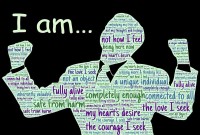- Home
- Business Processes
- Industry Knowledge
- Aerospace Industry
- Automotive Industry
- Banking Domain
- BFSI Industry
- Consumer/ FMCG Industry
- Chemicals Industry
- Engineering & Construction
- Energy Industry
- Education Domain
- Finance Domain
- Hospitality Domain
- Healthcare Industry
- Insurance Domain
- Retail Industry
- Travel and Tourism Domain
- Telecom Industry
- Leadership Skills
- eLearning
- Home
- Leadership
- Communication Skills
- Models of Communication
Models of Communication
In the field of communication studies, there are numerous models. No one model is suitable for all purposes and all levels of analysis. Some common models are known as Lasswell Model, George Gerbner Model, David Berlo Model, Shanon and Weaver Model, Osgoods Model, and Schramm Model. All these describe the four components of the communication process, namely, the source (communicator), the message, the channel, the receiver (audience).
So far we have discussed the concept and different types of communication. Now let us examine some popular models of communication that are how students of communication have attempted to model it. This will help in understanding the process of communication. As the nature and concept of communication, models of communication have also been the subject of a vast amount of research and this has occupied a great many researchers a great many hours. No single theory or model has found general acceptance.
What is a Model?
Before discussing the models of communication, let us first understand what the term 'model' means. A model is a graphic representation designed to explain the way a variable works. It is a pattern, plan, representation, or description designed to show the structure or workings of an object, system, or concept. A model of communication offers a convenient way to think about it by providing a graphical checklist of its various elements.
Aristotle – The first Model of Communication
The Greek philosopher Aristotle looked at communication from the rhetorical perspective i.e. speaking to the masses to influence them and thus persuade them. Aristotle constructed a model with three elements: Speaker-Speech-Audience in which the basic function of communication was to persuade the other party. This is accepted by many as the first model of communication.
Very basically we have:
Senderà Messageà Receiver
Now what the Sender does is to encode a message, that is put it in some form that he or she thinks will be understood by the person receiving it – unless there is a deliberate intention of not communicating. The sender will select the appropriate language, decide on the appropriate structure, consider the appropriate channel, and decide on the time for the message. On the other hand, the receiver will need to decode the message so that he can understand the message clearly, quickly, and fully.
Development of Communication Models
Thereafter in the twentieth century, many more models came up. In the latter part of the century, the concept of communication changed due to the advent of various mass communication media such as newspapers, radio, and television. During the First and Second World Wars, communication was also used for propaganda and it was perceived as a magic bullet that transferred ideas and knowledge automatically from one mind to another. However, this was later found to be a very simplistic model that showed communication as a linear one-way flow of communication. Sociologists, political scientists, and psychologists who joined the debate around this time argued that communication was a complex process that was dynamic and two-way in nature.
During this period, Neuro-Linguistic Programming (NLP) sought to create greater awareness of how we decode a whole array of communication cues and in particular, as described by O’Connor (O’Connor & Seymour, 2002). NLP is a set of skills for communicating more effectively with you and others and a way of extending choices and making better decisions.
The practitioners of NLP claim that, by studying and application, students of NLP can re-program their senses so that their ability to ‘read’ others is enhanced. More recently, Goleman (2007) has put forward the notion of Emotional Quotient (EQ). This implies that there is an attribute that marks some people off from others – the ability to be ‘intelligent’ with emotions. Organizations, in their selection process, are increasingly looking for both IQ (intelligence quotient) and EQ. It is realized that future leaders will need to have both attributes. There will be fewer opportunities for bright but insensitive leaders. Goleman has also come up with the notion of Social Intelligence (SI), a more refined ability to appreciate and act on the signals of others.
Some Common Models of Communication
The Lasswell model is the most widely quoted of all models of the communication process. It is a communicator-based linear model. Communication, according to Lasswell, is one-way or two-way. His concern is the effect rather than the meaning. Who says What; in Which Channel; to Whom; with What Effect;" captures the essence of the communication process as per the model.
Gerbner's model is a development of previous theories based on the linear process model. It relates the message to the 'reality' that it is 'about' and thus enables us to approach questions of perception and meaning, and it sees the communication process as consisting of two alternating dimensions - the perceptual or the receptive, and the communicating or means and control dimension. The merit of Gerbner's model is in localizing the meaning in the culture. Human perception is determined by culture. Consequently, it helps to explain different reception or interpretations of the same message by different audiences.
Berlo's ' proposed source-message-channel-receiver model (SMCR). He introduced six constituents of the communication model, namely, the communication: source, the encoder, the message, the channel, the decoder, and the communication receiver. These, he says, should not be viewed as separate things or entities or people. They are the names of behaviors that have to be performed for communication to occur.
Importance of Communication Models
The models assist us in our understanding of whether the process of communication in the society in which we live is: sender-centered (who), receiver-centered (to whom), or message-centered (what), channel/media-centered (how), goal-centered (with what effect). They also tell us that if the aim of communication is the transmission of a message to establish commonness, then the process must be two-way rather than one way, circular rather than linear. Communication must also take into account factors like context, culture, symbolic systems, and field of experience.
Related Links
You May Also Like
-
Generating Ideas using Brainstorming
The brainstorming technique was developed by Alex F. Osborn in 1957 and brainstorming means where a team of members generates a large amount of alternative fruitful ideas on a specific problem without any criticism and then evaluates each idea in terms of their pros and cons. Brainstorming techniques fall into four broad categories: visioning, exploring, modifying, and experimenting.
-
In its simplest sense, decision-making is the act of choosing between two or more courses of action. Decision making is a key skill in the workplace and is particularly important if you want to be an effective leader. When decisions have to be made, there are several stages that you should go through to reach a practical solution. Understand the meaning and importance of decision making and how to look at it as a process.
-
This style is characterized by leaders making decisions for others and expecting followers to follow instructions. The directive leader is adept at giving instructions, setting expectations, and establishing timelines and performance standards. However, it is possible for the same leaders to display both directive and supportive behavior as per the demands of the situation.
-
Thinking & Problem Solving Skills
Today's dynamic business world demands that you make decisions that significantly boost productivity and drive competitive advantage. But how do you know whether a decision will benefit the organization? And how do you know that the decisions are based on rational and statistical reasoning? Explore how to become a dynamic problem solver with the skills to make accurate decisions.
-
Process & Stages of Creativity
Creative ideas do not come just like that. There is a process to it. There are a number of techniques of creativity to support the generation of ideas but the widely practiced ones are brainstorming and lateral thinking. Most innovations are not so much the product of sudden insights as they are the result of a conscious process that often goes through multiple stages. The creative process can be divided into four stages of preparation, incubation, evaluation, and implementation.
-
Storming Stage of Team Development
Storming is the second stage of team development and this stage is characterized by a bid for power and inter-personal conflicts. Learn the key factors that occur in the storming stage and the strategies that a team leader can adopt to pass this stage of high winds
-
In the field of communication studies, there are numerous models. No one model is suitable for all purposes and all levels of analysis. Some common models are known as Lasswell Model, George Gerbner Model, David Berlo Model, Shanon and Weaver Model, Osgoods Model, and Schramm Model. All these describe the four components of the communication process, namely, the source (communicator), the message, the channel, the receiver (audience).
-
Have you ever noticed how we express ourselves or interact with each other? Have you ever wondered what communication is and what role it plays in our lives? One may wonder if communication is so omnipresent and integral to our lives, why study communication at all? We need to study communication because it is a complex process that consists of many elements and is also beset with a number of barriers and there is a need to remove the barriers so that the communication process is effective.
-
Communication is defined as the process of meaningful interaction between two or more persons with a view to arriving at a common meaning and understanding. There are different types of communication and these are used on different occasions. In this section on communication skills, Technofunc will equip you with the skills most needed in today’s dynamic, demanding workplace.
-
Narcissistic leadership is a leadership style in which the leader is only interested in him. Narcissists are good for companies that need people with vision and the courage to take them in new directions. Such leaders sometime might be highly successful, but is it a style to be followed. Learn the various types of narcissistic leadership and the characteristics of such leaders.
Explore Our Free Training Articles or
Sign Up to Start With Our eLearning Courses

About Us
Learning
© 2023 TechnoFunc, All Rights Reserved










